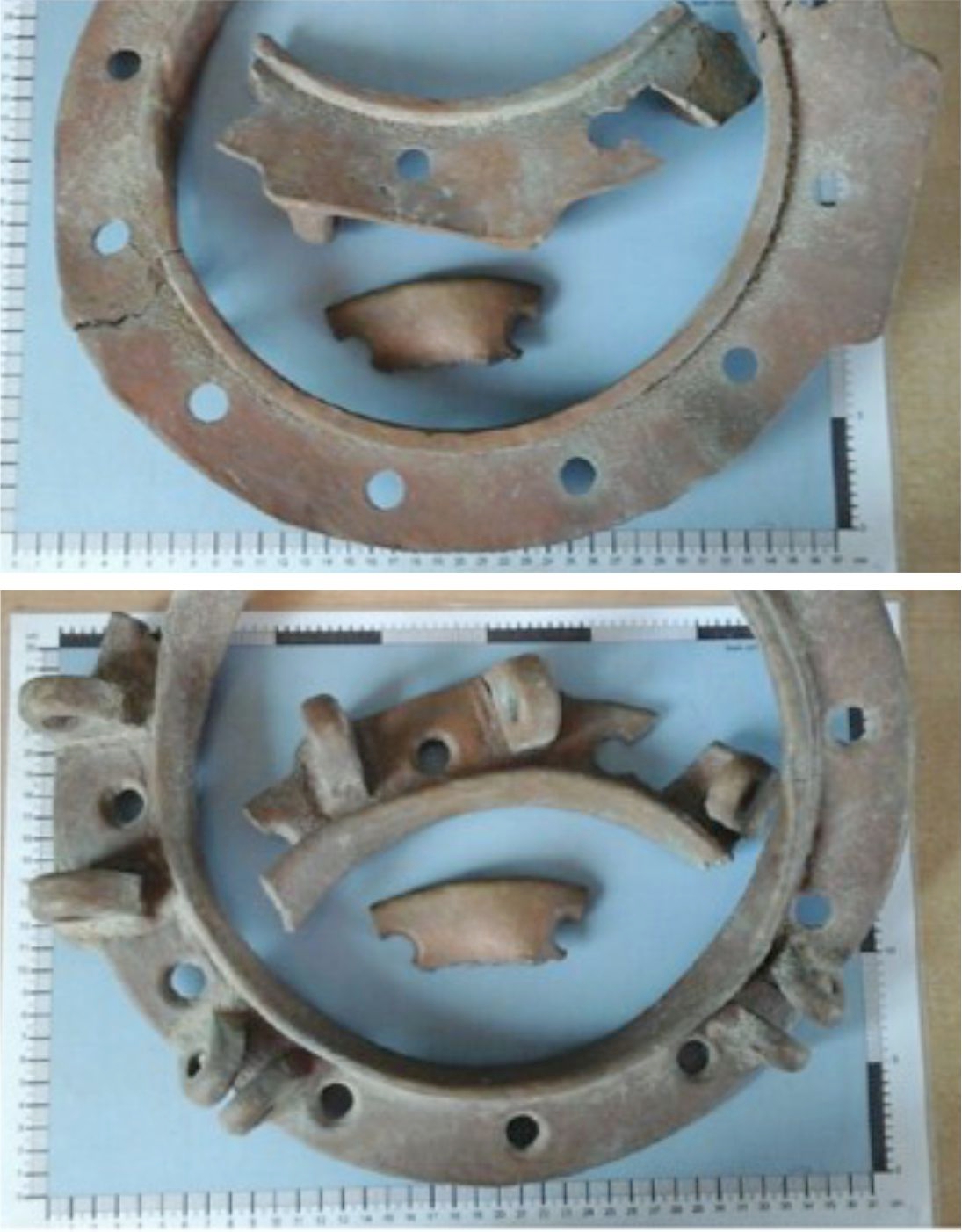I am very happy to be the new archaeologist joining the Coastal & Marine team at Wessex Archaeology in the Salisbury office! My first week has given me an insight in to some of the various future work I will be involved with as part of this brilliant team.
Marine Aggregate Industry Protocol for Archaeological Discoveries
The first project I have been working on and will continue to work on during my time here is the
Marine Aggregate Industry Protocol for Archaeological Discoveries. This scheme, funded by The Crown Estate and the British Marine Aggregate Producer’s Association and implemented by Wessex Archaeology has just entered in to its 12th year of existence where by archaeological finds discovered during dredging works are reported. The scheme was put in place to keep an archaeological record of material that may otherwise be thrown away as waste material and as a result, over 1600 finds have been reported since its launch in 2005. The aim of the Protocol is to raise awareness among dredging or construction companies about archaeological finds that they may encounter in the maritime environment and the importance of recording them and making the correct people aware of their existence. It is very simple for the companies to report a find through online forms and once these (along with photographs) are uploaded to the online system, Wessex Archaeology can then take the necessary steps to make sure the information reaches the relevant people such as the Receiver of Wreck. There are information booklets online on the Protocol and how to report finds and awareness talks can be requested by companies so that a member of the Protocol Implementation Team at Wessex Archaeology will come and speak to them directly about the scheme and answer any questions.
During my first week, I downloaded the information that had been uploaded for two new finds that were reported and submitted to the online system on Monday 24 April 2017. The two items reported by the same vessel were a brass porthole ring and a brass and copper pipe coupler, possibly used for fuel pipes. The archaeological reports were drawn up and the Nominated Contact of the dredging company along with the Receiver of Wreck were informed. Once these were sent, I researched both items to gather more information about their date and possible use, enlisting the help of a specialist to identify the pipe coupler and its possible function. This information, along with the find’s track plot and finder are compiled into two reports (Wharf and MIDAS) and sent to the client who reported the item, the Receiver of Wreck, and to external bodies such as Historic England and the local Historic Environment Record.
Another aspect of this project is the geospatial data. All the finds recovered since the project’s inception in 2005 are recorded and plotted on to a single map using each finds individual track plot or given coordinates. By doing this, we can see the spread of finds and the regions where most finds are reported. The lack of finds in some regions may be due to the type of aggregate being recovered, however, the masses of finds from other regions shows the success of the Protocol overall.
The last phase of finds reporting is that the items are shared with the public through social media as a means of outreach and engagement to get the public excited about maritime archaeological finds. Through Marine Aggregate Industry Protocol for Archaeological Discoveries, companies at construction level are being made aware of archaeological finds and the importance of reporting them, the information about the objects are then registered in the correct places and the public are made aware of these new discoveries. It is hoped that through constant outreach in this way that archaeology will become a subject that everyone gives a second thought to and hopefully will aid in preserving our underwater heritage for the future.
Tarmac_0779: Porthole Ring

This brass porthole ring was discovered in Licence Area 395/1 in the South Coast dredging region, approximately 12 km south-west of Selsey Bill. The remains do not include the second frame that would have been hinged to the remaining frame and would have contained the glass or the deadlight (a metal plate that was both a curtain and a reinforcement against heavy seas). This porthole ring has an internal diameter of 260 mm.
Portholes have been used for centuries to allow light and ventilation to enter the lower, darker levels of vessels and in some early cases, as a means of seeing out of a submersible. Portholes are watertight and are generally crafted from glass, secured within a metal frame that is then bolted to the vessel. The popular metals that are used to create the frame of the portholes are bronze and brass because these metals are less corrosive in saltwater. Modern types such as Tarmac_0779, appeared in 1863, where a hinged frame containing the glass would be attached along with the deadlight.
It is possible that this item came from a wreck and due to the fracture damage evident from the photographs, may have been removed from the wreck site by salvagers. The second frame attached via a hinge has been broken off, possibly as a result of damage caused by a wrecking event or due to a diver removing the item from a wreck and taking the glass element. Equally, the damage could have been caused whilst the vessel was in harbour and the glass element was salvaged to be reused with another frame, whilst remains of the damaged frame were discarded in to the sea.
By Lowri Roberts, Archaeologist